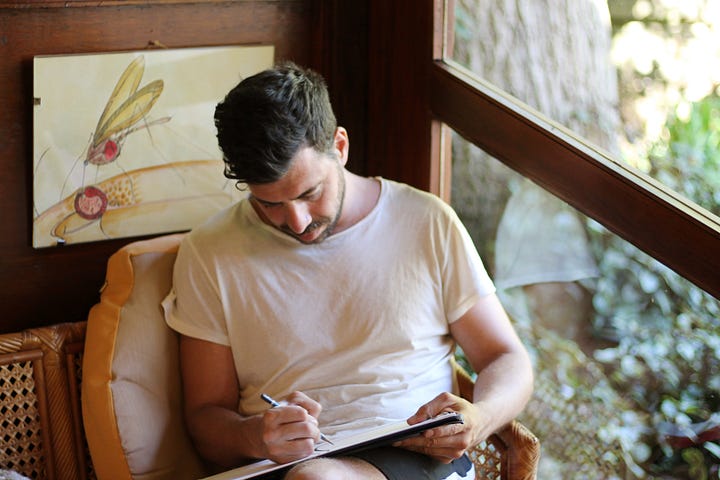Drawing for mindfulness is all about putting your concentration into an image form.
As an art therapist, I often reassure my clients that their artwork doesn’t need to look a certain way — it’s all about enjoying the therapeutic process of creating. Once they overcome this initial fear and enjoy making something with their hands, they love how it makes them feel. Those who get into the process can’t believe when the session is over. Time goes super fast for them.
Art is a powerful tool for promoting mental well-being; its capabilities as a form of mindfulness are genuinely remarkable. Whether you’re painting, sculpting, or drawing — creating something with your hands encourages you to stay present and develop new perspectives on life.
How do I start this?
Everyone can draw; even when I hear the word “can’t,” I explain that drawing is a skill you can learn and practice. You need the desire and the focus to get started. People often worry about being judged on their abilities, which is where the hesitation comes from. Sure, some people are incredibly talented. I’m not talking about becoming a world-famous artist in galleries worldwide. I want people to enjoy the process and see how it can increase mindfulness and help them to relax.
Drawing can be anything from doodling to observational. In other words, one can create a drawing out of shapes, lines, and imagination. In addition, some people like to draw from what they see, either a picture of an actual object or a live person, outdoor scene, etc. Both can be a mindfulness experience, as we will compare the two.
Purchase a special sketchbook
Give yourself the gift of tranquility and self-expression with a specially crafted sketchbook for mindful drawing. Let this become your purposeful reminder to take time out and nurture yourself to feel refreshed, centered & connected!
Find images to inspire
Stimulate your creativity by gathering visual inspiration! Print out some of your favorite photos or search through magazines for images you can use as a jumping-off point. Don’t stress about making an exact copy — the focus is on giving yourself something to spark ideas and get the creativity flowing.
Experiment with different drawing materials
Unleash your creativity with a range of drawing materials! From classic number 2 pencils to shimmery gel pens or creamy oil pastels, get creative and try things you have never used before. I love combining colored pencils and markers for a colorful look. For something unique, try out technical pens — perfect for zen-doodling! Find all these supplies online or at any nearby office store — start experimenting.
Setting the mood for mindfulness drawing






